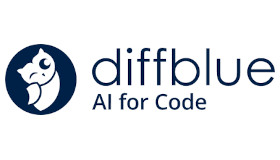Case study: Diffblue
State of Open: The UK in 2023
Phase Two “Show us the Money”
Part 2: AI Openness

 Matthew Lodge, CEO
Matthew Lodge, CEO
Run by Matthew Lodge, Driffblue evolved from an Open Source project by the AI research group at the University of Oxford in 2016. Put simply, it is a Generative AI for code companies that produces software that writes software. The rise of ChatGBT has been hugely beneficial for a business like Driffblue, demonstrating the capabilities of Generative AI and this is where Open Source is essential. Pre-trained Open Source models allow companies to adopt AI solutions more widely but also to fine tune models for particular use cases, something previously incredibly expensive.
Born in the UK, Mathew spent the majority of his professional life in the Bay Area, where he worked with key players of the software industry, such as Cisco, Symantec, and VMWare, as well as small VC-backed start-ups, helping him gain invaluable experience in building products used by hundreds of thousands of organisations world-wide. All of this experience he put to good use when he moved back to the UK and became the CEO of Diffblue. Diffblue, head-quartered in Oxford, evolved from an Open Source project and turned into Generative AI for Code software.
A collaborative approach: Open Source and Diffblue
Diffblue spun out of the AI research group at the University of Oxford in 2016. Today With a team of 50 members, it has grown to include some of the world’s largest banks, healthcare and tech companies as customers. Simply put, Diffblue is a Generative AI for code companies that produces software that writes software. As Mathew explains, demand for software developers far outstrips supply and the gap is set to get much wider over the coming decade. Today, nearly 100% of code is written by hand, yet at least 50% of it is repetitive, error-prone and tedious to write. Diffblue’s market-leading AI technology and approach can automate that 50%, unlocking enormous time and cost savings for its customers.
Mathew explains that Diffblue maintains a leading Open Source code analysis tool and sells a proprietary main product, and has a strong relationship with Open Source components. “Open Source is very important to our product in terms of the ingredients, and we contribute back to those projects. We’re very interested in making sure that the language models that are used inside a product like ours are Open Source because we believe it’s much healthier for the entire ecosystem. Our core product uses reinforcement learning for the most part and we use pieces of large language models in what we do.”
Perks of the location
In terms of the benefits of being located in the UK, Mathew lists the affordability of talent. He compares it to the Bay Area and feels that the cost of creating a team there is much higher.
The downside of the UK he feels is access to capital. He notes that there are far fewer venture firms that really understand the industry and the technology. As he goes on to say, “The UK is very good at very smart people and good ideas. The founders of Diffblue picked the right problem to solve, they made lots of good decisions about the problem and what to go after.” Although he acknowledges that the single largest market for what they do is in the US – there’s no getting around that. They plan on setting up in the US at some point next year.
The explosion of AI
Diffblue is now seeing customers evaluating their product because of ChatGPT. There is now a huge consciousness of what Generative AI can do. It’s been incredibly helpful to them because a lot of people didn’t realise that they could buy software to solve a coding problem.
As he says, “They thought that hiring people was the only way. They didn’t believe we could do what we said – they thought we were exaggerating. ChatGPT has really helped us with both of those problems, because now people know that it’s possible – this software does exist, and it can do some incredible things. And this is where Open Source is really vital in AI.”
Historically, foundational models were only accessible to people who had billions of dollars in cash, because it included very expensive training runs — $4-$5m per run. The emergence of Open Source models that are pre-trained allows companies to adopt AI solutions in a wider way and fine tune those models for specific use cases.
As Mathew says, “I’m very excited about what could happen with foundational models with Open Source code and pre-trained weights that can be fine-tuned. Some of the innovations that we’ve seen in things like Open Source stable diffusion are a really great example. Where are the constraints – people don’t have a lot of money, they don’t have a lot of hardware. And so they’ve made stable diffusion — the Open Source project — much more efficient now. It’s much easier and cheaper to train yourself, and you can run it yourself. There’s a huge amount of innovation around that and it now out-performs systems made by multi-billion dollar companies. And that to me, is a really great example of the power of Open Source.”
